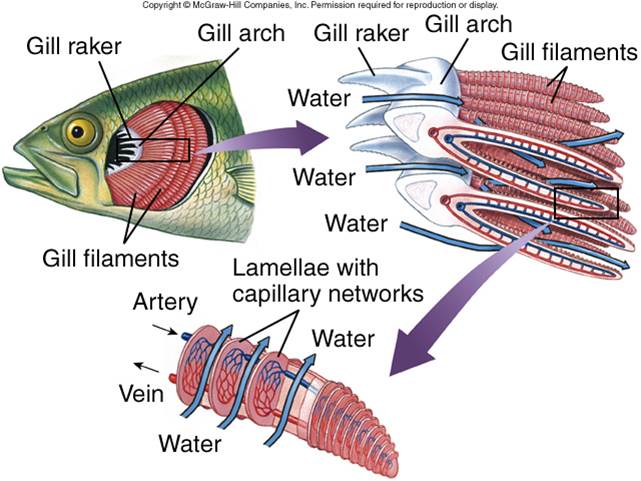Respiration in Fish
Respiration in fish takes place with the help of gills. Most fish possess gills on either side of their head. Gills are tissues made up of feathery structures called gill filaments that provide a large surface area for gas exchange. A large surface area is crucial for gas exchange in aquatic organisms as water contains very little amount of dissolved oxygen. The filaments in fish gills are arranged in rows in the gill arch. Each filament contains lamellae, which are discs supplied with capillaries. Blood enters and leaves the gills through these small blood vessels. Although gills in fish occupy only a small section of their body, the immense respiratory surface created by the filaments provides the whole organism with efficient gas exchange.
Fish take in oxygen-rich water through their mouths and pump it over their gills. As water passes over the gill filaments, the blood inside the capillary network picks up the dissolved oxygen. The circulatory system then transports the oxygen to all body tissues and ultimately to the cells. While picking up carbon dioxide, which is removed from the body through the gills. After the water flows through the gills, it exits the body of the fish through the openings in the sides of the throat or through the operculum, a flap, usually found in bony fish, that covers and protects the fish gills.
Some fish, like sharks and lampreys, possess multiple gill openings. However, bony fish like Rohu, have a single gill opening on each side.

Comments
Post a Comment